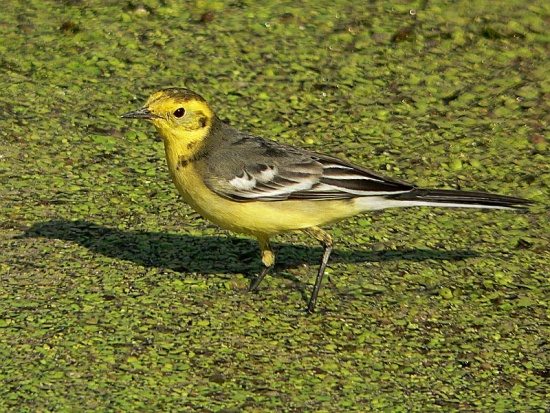| This article is incomplete. This article is missing one or more sections. You can help the BirdForum Opus by expanding it. |
- Motacilla citreola
Identification
15.5-17 cm. Grey upperparts, bright yellow below, yellow head.
Distribution
Citrine Wagtail has a breeding distribution from Russia through Siberia, and south to Iran, Afghanistan, India, Tibet, China, and Myanmar. The species is migratory at least in parts of its range, and is a rare but regular guest to western Europe. Accidental vagrant to the United States with one record in Mississippi.
Taxonomy
Generally speaking, citreola is a north-eastern subspecies, werae is south and west of that, and calcarata is south of both.
A recent paper by Pavlova et al. (2003) has proposed that Citrine wagtail should be split into two species, an eastern and a western part (see external link). The evidence came from DNA analysis and indicated that when an analysis included Yellow Wagtail, the two populations of Citrine wagtail were not each others closest relatives. This split is not at present accepted by many taxonomic authorities but if it were to become accepted, the western species (corresponding to current subspecies werae) would breed west and south of a line from a little east of the west end of Mongolia to the White Sea, while the eastern species (corresponding to citreola) would be confined to areas north and east of that line. The authors seemed not to sample the range of calcarata.
Habitat
Wet meadows, tundra, bogs.
Behaviour
It is a ground nester and 4-5 speckled eggs are laid.
The diet includes insects.
Vocalisation
<flashmp3>Motacilla citreola (song).mp3</flashmp3>
Listen in an external program
References
Wikipedia




